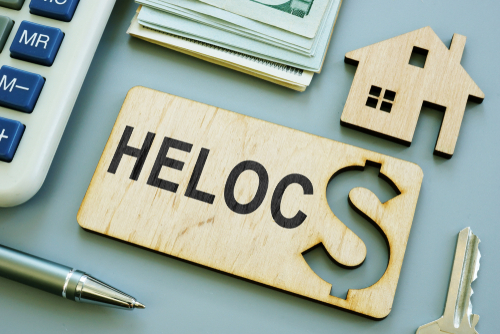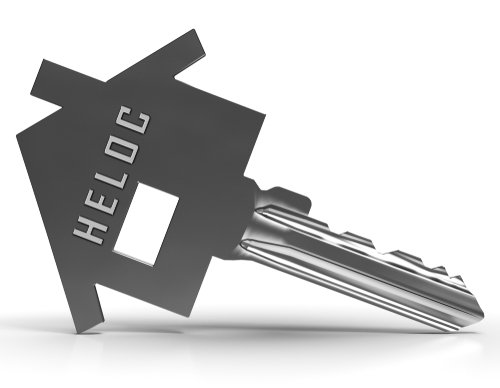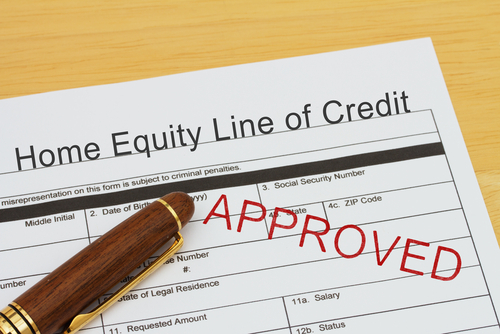There are plenty of benefits to owning real estate. You can earn passive income, enjoy several tax benefits, and watch your property appreciate. But what if you could use your property to invest in another? Using a Home Equity Line of Credit (HELOC) could be a viable option for you. Today, we’ll go over what a HELOC is, how much you can borrow with one, and how to use one to invest in real estate. So, read along to learn more about the process and explore the pros and cons!

Contents of This Article:
- What Is a Home Equity Line of Credit?
- How to Get a Home Equity Line of Credit
- How to Pay Back a HELOC
- Using a HELOC to Buy Real Estate
- Pros and Cons of HELOCs
- Management Tips for Rental Property Investors
What Is a Home Equity Line of Credit?
A Home Equity Line of Credit (HELOC) is a financial tool that allows homeowners to access a line of credit based on the equity they’ve built up in their property. That said, this equity is the difference between the current market value of the home and the remaining balance on the mortgage.
Unlike a traditional loan, a HELOC operates like a revolving credit line, like a credit card. You can use them for nearly any purpose, even real estate investing! However, most people use them for remodeling projects, home additions, debt consolidation, or other large expenses.

Borrowers can withdraw funds up to a predetermined limit during a specified draw period, usually around 5 to 10 years. At first, you’ll pay interest only, but when the draw period is up, you’ll have to pay the principal along with interest. Interest rates on a HELOC can vary, and borrowers must make minimum monthly payments. Additionally, your credit limit is replenished when you repay the borrowed money.
It’s important for borrowers to remember that a Home Equity Line of Credit is secured by the home itself. So, if you fail to make payments, you may lose your property through foreclosure. As such, it’s best to consult with a financial advisor before obtaining a HELOC to ensure it aligns with your financial goals and circumstances.
How Much Can You Borrow With a HELOC?
The amount you can borrow with a Home Equity Line of Credit depends on the equity you have in your home. Additionally, lenders will assess your credit and any current outstanding debts, along with your loan-to-value (LTV) ratio. Depending on the lender, you may be able to borrow up to 85% of your equity.
For instance, if your home is currently worth $400,000, and you owe $250,000 on your mortgage, you have $150,000 in equity. Your lender may approve you for a HELOC of up to $127,500, which is 85% of your equity.
How to Get a Home Equity Line of Credit
Getting a home equity line of credit is usually a straightforward process. Here are some of the steps to help guide you through the process.
- Evaluate Your Equity
- Research and Choose a Lender
- Gather Necessary Documents
- Apply for a HELOC
- Review and Sign the Agreement
Evaluate Your Equity
First, you’ll want to evaluate your finances and credit score. After all, a higher credit score can help you secure a favorable rate for your HELOC. Additionally, you’ll want to get a rough idea of your home’s current market value. You can get an estimate using various real estate platforms or by consulting a real estate agent.
Finally, you’ll want to calculate your equity. So, subtract the amount you owe on your mortgage from the estimated value of your home to determine your available equity. For instance, if your home is currently worth $250,000, and you still owe $150,000, you have $100,000 in equity.
Research and Choose a Lender
Next, instead of choosing the first lender you come across, you’ll want to research multiple lenders. That way, you can compare different interest rates, fees, and terms and conditions.
Gather Necessary Documents
Lenders typically require several documents, like proof of income, tax returns, property information, and existing mortgage details. So, ensure you have the documentation ready to go to ensure a smoother process.
Apply for a HELOC
Once you’ve selected a lender to work with, it’s time to fill out your HELOC application to start the loan approval process.

Your lender will help guide you through the application process. However, you’ll want to be prepared to provide the right documentation and answer questions about your financial situation.
Your lender may also require an appraisal of your home to determine the current market value and verify your equity. Then, if your application is approved, the lender will give you the terms of the HELOC, including the credit limit, interest rate, draw period, and repayment period.
Review and Sign the Agreement
It’s important to carefully read through the terms and conditions of the HELOC agreement before signing off on it. Then, once you think everything is in order, you can sign it. After you’ve signed, you’ll receive information on how to access and use the funds. Once the account is fully established, you can use it to make withdrawals.
How to Pay Back a HELOC
Paying back a HELOC is different from paying back a typical installment loan. For instance, with a home equity line of credit, you can borrow money as often as you’d like as long as you don’t exceed the credit limit. Then, when you repay the borrowed money, it’ll reappear in your available credit.
That said, your payments may vary each month if you have a variable interest rate. As such, it’s important to budget accordingly and understand what you must pay each month. Unfortunately, if you’re unable to pay back what you’ve borrowed, the lender could foreclose on your home.
Additionally, it’s important to understand the draw period and repayment phase. After the draw period, you’ll want to plan for higher monthly payments, as you’ll be paying both the principal and interest on your HELOC.
Using a HELOC to Buy Real Estate
You can use a HELOC for several purchases, including purchasing real estate. So, if you’re an investor who wants to grow their portfolio rather quickly, this could be an excellent strategy for you.
You can apply for a HELOC if you have substantial equity in one property. Then, with the funds from the HELOC, you can use it as a down payment on another property, like an investment property.
For instance, if you have $120,000 of equity in one property, you may be able to get a HELOC for up to $102,000. Then, you can use that as a down payment to purchase an investment property. However, it’s important to remember that when you use a HELOC, you’ll have two loans to repay–the mortgage on the new property and your line of credit.
Pros and Cons of HELOCs
A home equity line of credit can be a valuable financial tool, but like any financing option, it comes with its own set of pros and cons. Here are some of the main ones to consider if you’re planning on using a HELOC.
Advantages of HELOCs
- Flexibility- You’ll be approved for a maximum HELOC amount, but you don’t need to use it all. Instead, you can borrow against the line of credit as needed, up to the approved limit, during the draw period.
- Lower Interest Rates- HELOCs are backed by the equity in your home, which acts as collateral for the debt, which makes them less risky for lenders. As such, they typically have lower interest rates compared to other forms of credit, like credit cards or personal loans.
- Tax Benefits- In many cases, the interest paid on a HELOC may be tax-deductible. For instance, if you use the funds to make home improvements, you may be able to deduct the interest. However, it’s important to consult a tax expert for more information.

- Interest-Only Payments- During the draw period, you may have the option to make interest-only payments. This can help lower your monthly payments, freeing up space for other necessary expenses.
Disadvantages of HELOCs
- Variable Interest Rates- The interest rates on a HELOC are typically variable and can change over time. This means your monthly payments may fluctuate, potentially making it harder to budget.
- Risk to Your Home- A HELOC is secured by your home, so if you’re unable to make payments, you could potentially lose your property through foreclosure.
- Repayment Periods- You have a limited time to borrow against the line of credit, known as the draw period. After that, you must start repaying the principal and interest.
- Market Fluctuations- If the real estate market experiences a downturn and your home’s value decreases, it may reduce your available credit limit.
Management Tips for Rental Property Investors
Using a Home Equity Line of Credit to expand your rental business can be an excellent strategy for investors. However, the more properties you have, the harder it is to manage them all. That’s why having a reliable property management company on hand is important to help you with all the day-to-day tasks.
Need More Advice? contact us today!
Bay Property Management Group offers comprehensive rental management services. So, we’ve got it covered whether you need help marketing properties, finding qualified tenants, or performing routine maintenance.
We offer services throughout Baltimore, Philadelphia, Northern Virginia, and Washington, DC. Contact BMG today to learn more about how we can help your rental business succeed!
